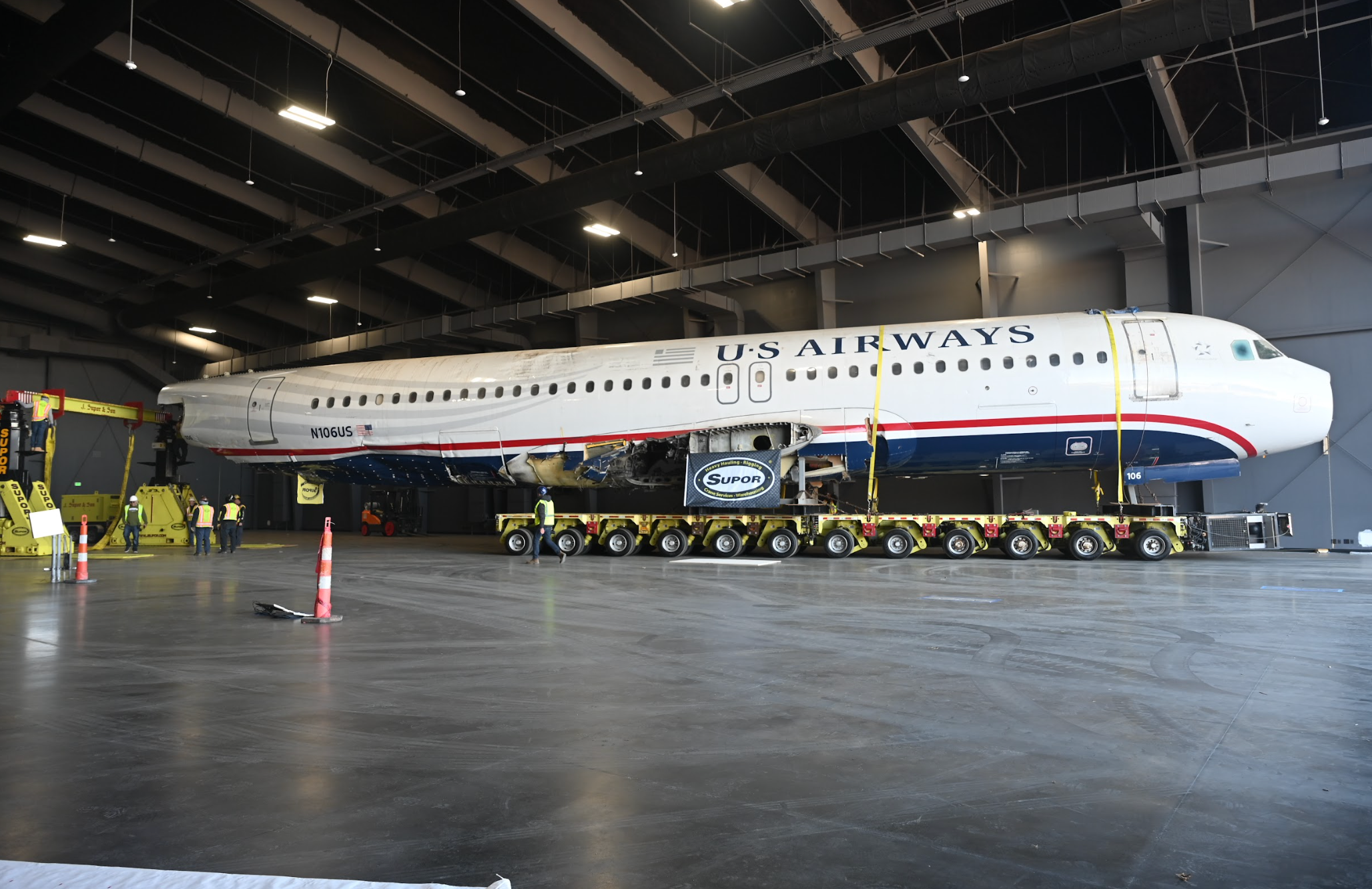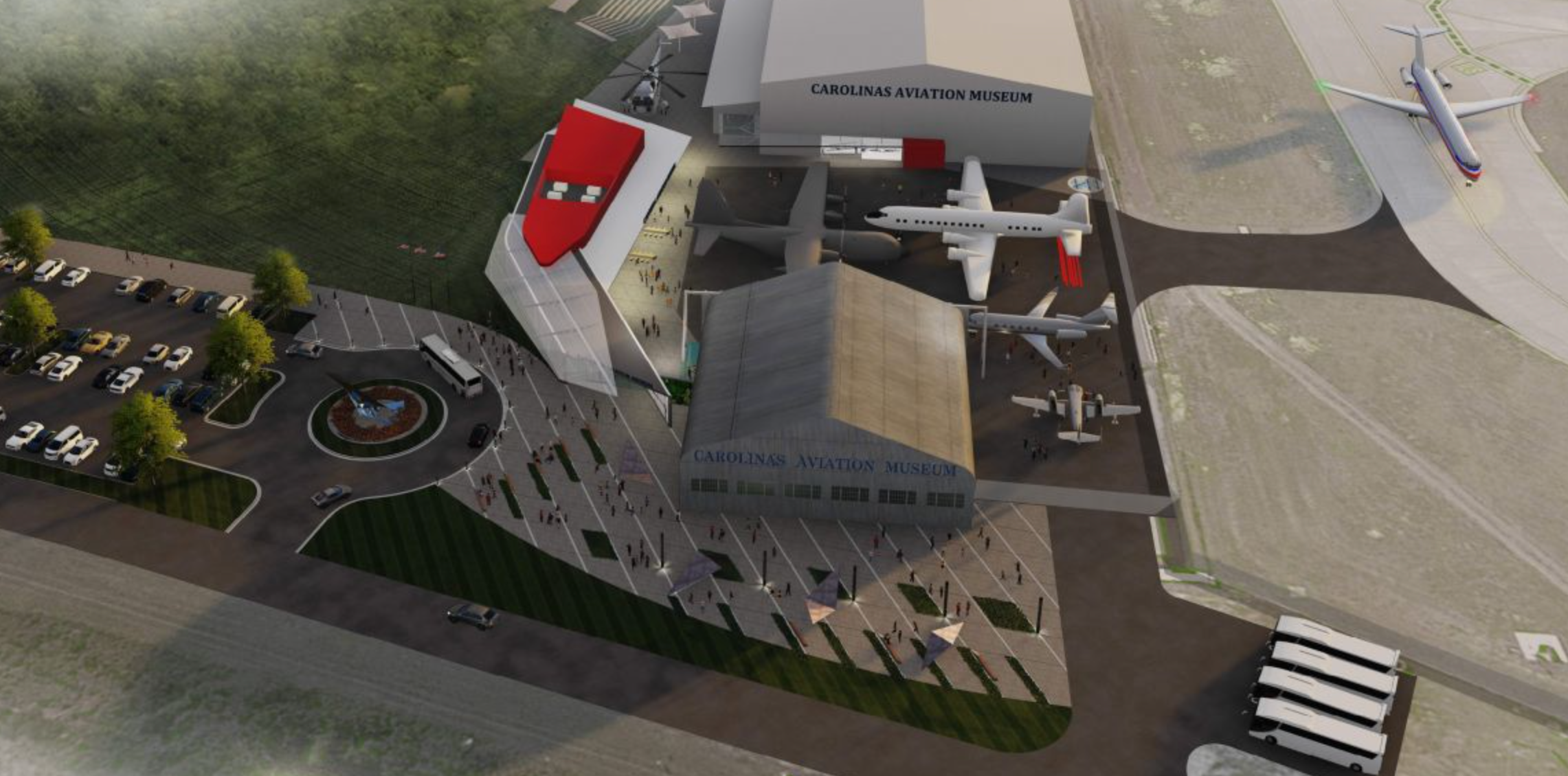Summary
- Sullenberger Aviation Museum has begun moving its aircraft collection into its new $30 million facility ahead of its Summer 2024 opening.
- The new facility features a state-of-the-art main exhibit gallery for the US Airways A320, known as the ‘Miracle on the Hudson’ aircraft.
- The museum grounds include interactive exhibits, flight simulators, STEM education programs, and an outdoor plaza with historic aircraft on display.
On Friday, the Sullenberger Aviation Museum announced that it has begun moving its collection of commercial, civil, and military aircraft into its new facility. Among the planes transported into the new facility is the crown jewel of the museum’s collection, the Airbus A320 from US Airways Flight 1549, also known as ‘Miracle on the Hudson.’
New facility
In late September 2022, the Carolinas Aviation Museum held a groundbreaking ceremony for its new facility and renamed the museum in honor of Captain Sully Sullenberger. A little over a year later, in advance of the Summer 2024 opening, the Sullenberger Aviation Museum began moving its collection into its new facility.
The new facility, which cost $30 million, is 105,000 square feet and includes a 35,000 square foot state-of-the-art main exhibit gallery for the US Airways A320. This main exhibit gallery and innovation hub is next to Charlotte Douglas International Airport and features space to view the active runways and taxiways.
Photo: Sullenberger Aviation Museum
The 35,000-square-foot ‘Miracle on the Hudson’ exhibit will feature salvaged passenger and crew items such as life preserves, luggage, and beverage carts. There will also be a video that takes visitors through the journey of Flight 1549 from its takeoff from LaGuardia Airport to the extensive news converge after the landing in the Hudson River to the investigation into the engine failure.
The museum grounds comprise three buildings that house interactive exhibits, STEM education programs, and flight simulators. There will be an outdoor plaza where historic aircraft will be displayed. These landmark aircraft include a replica of Orville and Wilbur Wright’s original Wright Flyer plane, TV-1, the United States’ first operational jet fighter, and a Skysteak plane used to test breaking the sound barrier.
Watch the aircraft move
The Sullenberger Aviation Museum released video of the transportation process of the US Airways A320. You can see the great care being taken with this historic airframe, as it’s meticulously transported from its hangar to its new, permanent home. Wings and tail were removed for transportation, but will be reattached in situ.
It was transported and reassembled to its exhibit-ready condition by the museum’s collections team and volunteers. They were also assisted by J Supor & Son, a New Jersey trucking and rigging company responsible for providing specialized recovery efforts to remove the plane from New York’s Hudson River. They also were responsible for transporting the A320 to Charlotte from New Jersey in 2011. Needless to say, the A320 was in good hands.
About Flight 1549
US Airways 1549 was a scheduled flight between New York LaGuardia and Charlotte Douglas on January 15th, 2009. The aircraft bearing the registration N106US was powered by two General Electric CFM56 engines and was piloted by Captain Chesley Sullenberger with First Officer Jeffrey Skiles.
After taking off from LaGuardia, the A320 hit a flock of birds, which obscured the pilot’s windscreen view, and almost immediately, both engines shut down. Initially, Sullenberger, who took control of the aircraft, requested to return to LaGuardia, but the pilots quickly realized they would not make it and would end up in the Hudson River.
Photo: Sullenberger Aviation Museum
The aircraft passed over the George Washington Bridge by just 900 feet and ditched in the Hudson at 3:31 pm. The flight only lasted five minutes.
Following the crash, the airframe was recovered and investigated by the National Transportation Safety Board (NTSB). The airframe of the A320 remained preserved, and after the investigation concluded, it was put up for auction. In June 2011, the airframe was donated to the Carolinas Aviation Museum, the premier aviation museum in the Southeast, by the American International Group (AIG). Since then, the museum has undergone many renovations and was renamed in honor of Captain Sully earlier this year. Sullenberger Aviation Museum is set to open in the summer of 2024.



